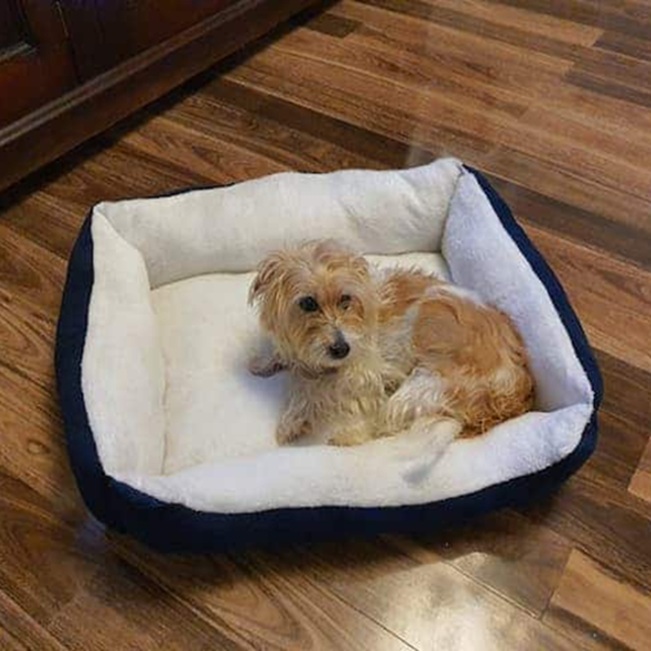Have you ever noticed your dog curling up on the cold floor or squeezing into a small corner of the couch? Just like humans, dogs need a comfortable space to rest, recover, and recharge. Therefore, a dog bed is more than a luxury—it’s a crucial investment for their health, comfort, and overall well-being.
It provides support for joints and muscles, helps regulate body temperature, and gives them a sense of security and their own personal space. If you’re a first-time dog parent and don’t have a clue about the type of bed you should get, this guide breaks down several important factors to take into account when choosing.
Types

Upgrade your pup’s nap game and choose from a wide selection of cosy dog beds online. Nowadays, a wide range of dog beds is available, so selecting the right type depends on your pet’s size, sleeping habits, and specific health needs. However, there are several sleeping options designed to provide comfort, support, and durability for almost every breed.
Standard Cushion beds are the most common and versatile. They are soft, padded, and ideal for dogs who like to sprawl out. These designs often come in various sizes and materials, making them suitable for most breeds.
Orthopaedic alternatives are designed for older dogs or those with joint issues. Filled with memory foam or supportive padding, they help relieve pressure on hips, shoulders, and elbows, promoting better sleep and reducing discomfort.
Bolster options, on the other hand, feature raised edges or walls, providing canines with a sense of security while offering them head and neck support. These are perfect for puppies that like to curl up or lean against something while resting.
Elevated or cot-style beds keep dogs off the ground, promoting airflow and keeping them cool. They are durable, easy to clean, and ideal for outdoor use or warmer climates.
Last but not least, heated and cooling models cater to specific temperature needs. Heated beds are perfect for colder months or senior dogs, while cooling ones help regulate their body temperature during hot weather.
Getting the Right Size
Size is the next big thing when browsing dog beds online. It’s crucial for their comfort and overall well-being. A bed that is too small can leave your dog cramped and restless, while a bed that is too large may not provide the cosy, secure feeling many dogs prefer. To find the perfect fit, start by measuring your dog from the tip of their nose to the base of their tail. Add a few extra inches to ensure they have room to stretch out fully.
Consider your dog’s sleeping style as well. Breeds that like to curl up may feel comfortable in a snug, smaller bed, whereas dogs who sprawl out or change positions frequently need a larger, more spacious option. Puppies may require a slightly larger bed as they grow, while older dogs with joint issues might benefit from a bed that provides ample support without forcing them into a confined space.
Also, keep breed and weight in mind. Larger breeds like Labradors or German Shepherds require sturdier, more spacious beds, while smaller breeds like Chihuahuas or Pomeranians do well in compact options.
Materials and Fillings

The materials and fillings of a bed for puppies play a key role in comfort, durability, and support. High-quality fabrics ensure the bed can withstand daily use while remaining easy to clean.
Common materials include cotton, polyester, and canvas, which are soft, breathable, and durable enough for active dogs. Some beds feature waterproof or water-resistant covers, ideal for puppies, older dogs, or pets prone to accidents. Removable, machine-washable covers make maintenance simple and keep the bed fresh.
Fillings are equally important for support and longevity. Standard polyester fiberfill provides a soft, cushiony feel suitable for most dogs. Memory foam or orthopaedic foam is recommended for older dogs or those with joint problems, as it contours to the body, relieving pressure on hips and elbows.
Some beds for puppies combine foam with fiberfill to offer a balance of softness and structure. Bolsters or raised edges are often filled with foam or fibre for additional head and neck support, giving dogs a sense of security.
Age and Health
A dog’s age and health significantly influence the type of bed they need. Puppies are energetic and growing rapidly, so a supportive yet soft bed helps protect their developing joints while giving them a cosy space to rest.
Older dogs, especially those with arthritis or hip dysplasia, benefit from orthopaedic beds with memory foam or supportive padding that relieves pressure points and eases joint pain.
Health conditions also play a role in bed choice. Dogs with mobility issues may need low-profile beds for easy access, while those prone to overheating might require cooling materials or elevated beds that improve airflow.
Beds with removable, washable covers are essential for dogs with allergies, skin sensitivities, or incontinence issues, as they maintain hygiene and prevent irritation.
























